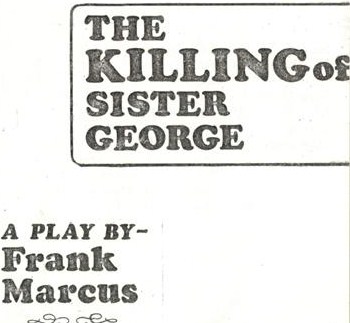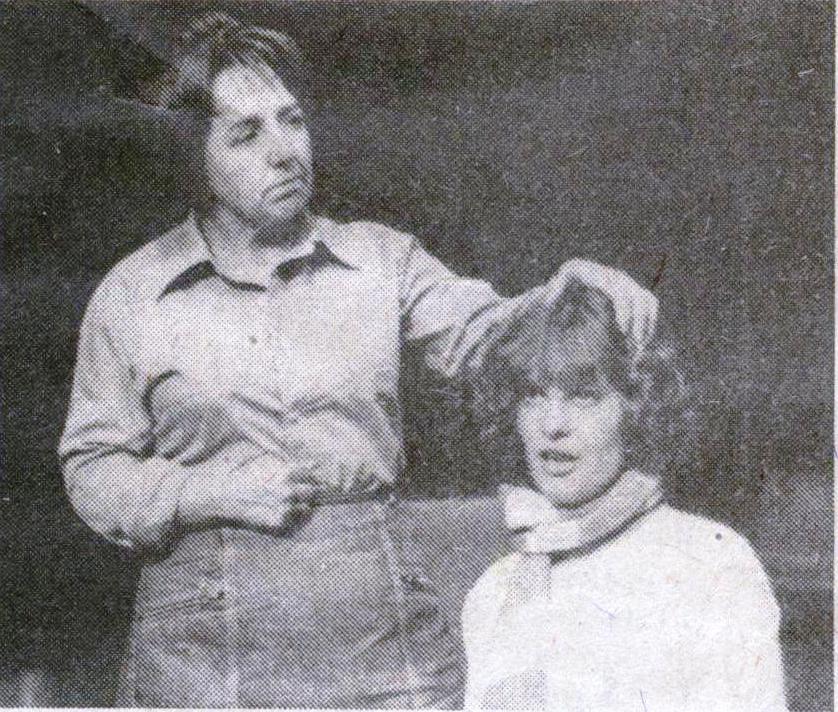The Bench Production

This play was staged at Havant Arts Centre, East Street Havant - Bench Theatre's home since 1977.
Characters
| June Buckridge (Sister George) | Janet Simpson |
| Alice 'Childie' McNaught | Jane Cummings |
| Mrs Mercy Croft | Ruth Prior |
| Madame Xenia | Eve Moore |
Crew
| Director | Les Cummings |
| Stage Manager | Robbie Cattermole |
| Assistant Stage Manager | Lezley Picton |
| Lighting | Fred Jeffries |
| Sound Effects | Ray Osborne |
Reviews
The News Anon
Bench meets demands
With its small cast, Frank Marcus's Play 'The Killing of Sister George' makes many demands on actors, but the Bench Theatre proved equal to the task with its production at Havant Arts Centre. Janet Simpson is superb as the actress June Buckridge who plays Sister George, the district nurse in a popular radio serial about typical village life. Sister George has a huge following among listeners and programmers hope to capitalize on her popularity by killing her off and so boost sagging ratings
But the manner of her death is laughable. She is knocked off her moped by a ten-ton truck - an accident which just happens to coincide with road safety week. The actress watches the series degenerate. Her exit from the show is followed by the deaths of other much-lived characters. The fictional village of Applehurst is soon alive with gossip about the doubtful escapades of one of the younger female characters. "Applehurst mustn't fall behind the times," June is told.
This sequence of events is parallelled by the actress's struggle to relinquish her artificial character and cope with the break-up of her lesbian friendship with Alice McNaught, nicknamed Childie. Jane Cummings as Childie, makes the most of a rather superficial character. Tired of her companion's constant cajoling, she runs off with June's boss at the BBC Mercy Croft. To Jane's credit, Childie remains a sympathetic figure. The two principal characters receive wonderful support from Ruth Prior, as the immaculate, back-stabbing BBC executive, and Eve Moore with a lively portrayal of the flamboyant fortune teller Madame Xenia. Though it deals with the tragic and occasionally unpalatable side of life, the play remains humorous to the bitter end. It is thoroughly enjoyable entertainment representing something of a triumph for husband and wife duo, Jane and Les Cummings, the director, with his first production for the Bench. The play continues tonight and there will be further performances on Thursday and Friday next week. Curtain up is at 7.30 p.m.
The News, 3rd October 1981
